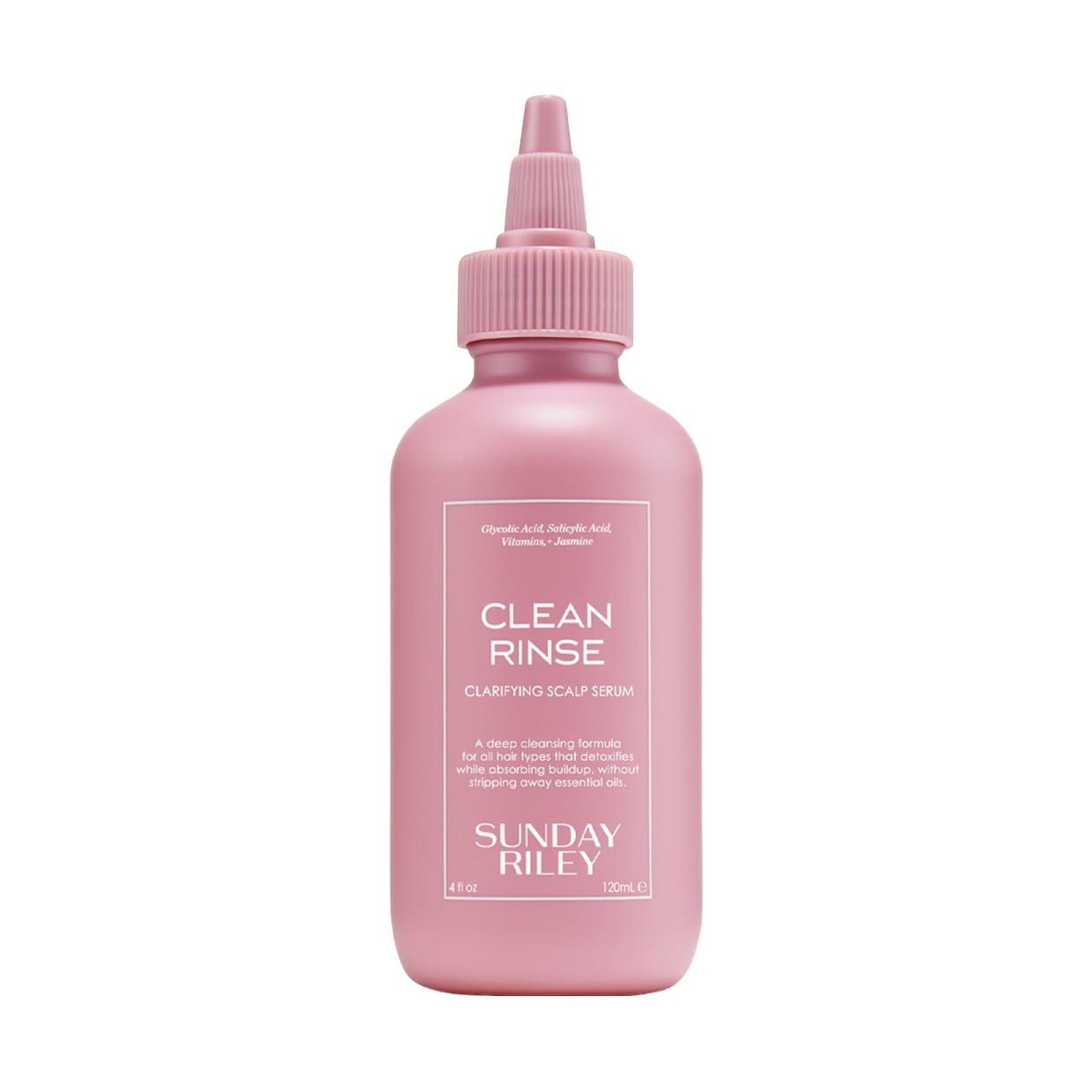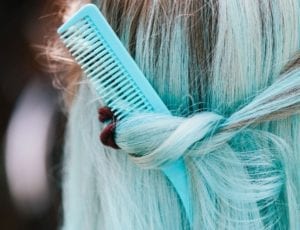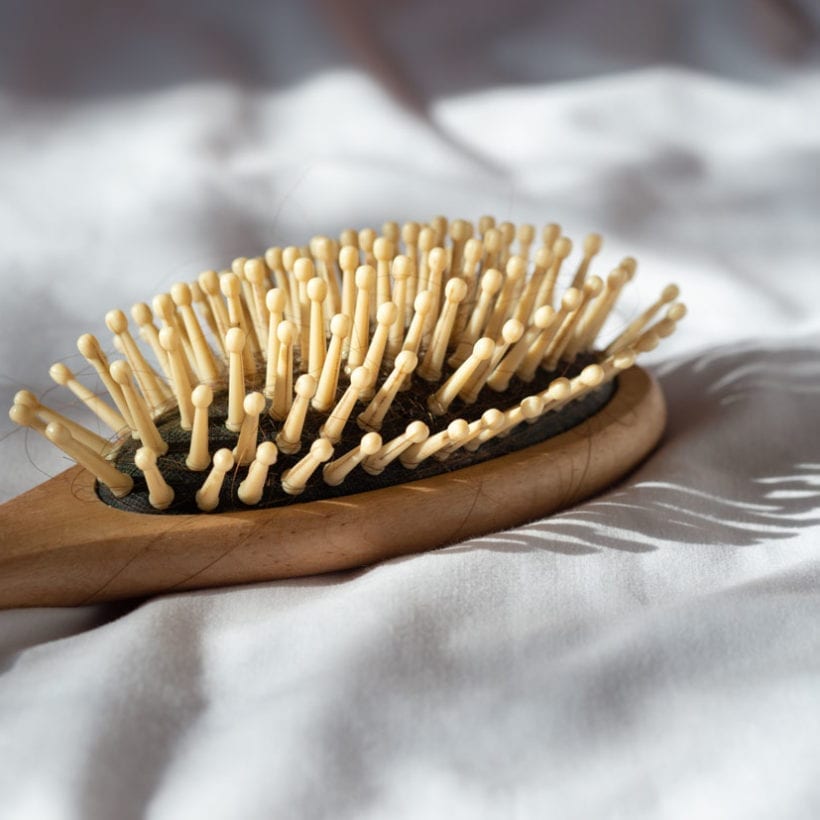“[Around] 30 percent of women under 40 will experience hair loss, increasing to over 50 percent of women over the age of 65”, says Dr. Dominic Burg, chief scientist, hair biologist, microbiologist, and trichologist for évolis Professional. And much like other aspects of our outer appearance, hair (especially a lack thereof) can make us feel defeated by its thinning and balding.
And with the rise in body love on social media, influencers, like Dallas-based Dani Austin, are using their platform to draw attention to this all too common occurrence. Austin’s Instagram feed is filled with raw, emotional, and honest insight into her hair loss journey, helping to dismantle the stigma surrounding the matter.
https://www.instagram.com/p/B0R4s-gg4jR/
Hair loss — also known as alopecia, which Burg describes as “a blanket term that describes all forms of hair loss” — can be caused by many reasons. Many doctors chalk it up to stress, but other lifestyle factors such as hormonal issues, aging, diet, and pattern hair loss (androgenetic alopecia) can also be a leading cause.
And while hair growth products are a dime a dozen, many are catered to those with hair loss. One of the most common hair loss treatments includes minoxidil, which Burg says is effective for some people. But he notes it is important to visit a dermatologist before trying creams and lotions, especially if hair loss falls under the alopecia areata category (hair falling out in small circles) or alopecia totalis (complete hair loss).
Suppose your experience with hair loss or thinning is related to the lifestyle concerns mentioned above, slapping on deep conditioners, popping biotin, or using magnesium. In that case, two of the more popular forms of at-home treatment — aren’t the only way to long and strong strands. Case in point: With its stimulating needles, Burg says a derma roller can also promote hair growth and can help products to penetrate deeper.
What is a Derma Roller?
According to Burg, “derma rolling is a form of micro-needling where a small wheel containing hundreds of tiny needles with sizes ranging between 0.2-2 millimeters is rolled over the skin, creating a large number of small punctures in the upper layers of the skin.”
When used on the face, derma rolling can help promote better product absorption and “has been shown to be effective in the reduction of scar tissue,” notes Burg. As a result, the skin might appear clearer in tone with a natural, healthy-looking glow. In addition to the face, derma rolling can be used on the body.
What are The Benefits of Using a Derma Roller For Hair Growth?
When rolled across your scalp, the derma roller creates tons of tiny punctures on the surface of the scalp and, according to Burg, “it is thought that the body reacts to the many small wounds created by derma rolling by flooding the local area with inflammatory and wound-healing molecules, such as growth factors.” This reaction is what helps rejuvenate the complexion and remodel scar tissue when a roller glides across the face, but in terms of hair growth, “it is thought that the growth factors can improve follicular growth,” says Burg.
Derma rolling should only be performed on a very clean scalp with a sterilized roller.
How Do You Choose a Derma Roller?
While the treatment is similar to derma rolling your face, running a micro-needling tool across your scalp is slightly different in action. First, you will want to pay close attention to the needle size. “The scientific literature surrounding hair loss and micro-needling shows that a 1.5 millimeters needle is the most commonly used to treat hair loss,” Burg explains. “This has to do with penetration depth [as] the hair follicles sit within the dermis between 1-2 millimeters deep, so this depth of penetration is required,” he adds.
Getting Started
After that, it is all about starting with a squeaky-clean surface. “Derma rolling should only be performed on a very clean scalp with a sterilized roller,” notes Burg. To ensure a clean scalp and roller, jump in the shower and give yourself a good lather, rinse and repeat. You might also find that using an exfoliating shampoo brush or treating your head to a little in-shower scalp massage can help lift away excess dirt and debris, including dead skin cells on the scalp’s surface. After you have washed up, you will want to disinfect your derma roller by spritzing some rubbing alcohol across the needle-covered barrel.
Your hair can be either damp or dry, but either way, Burg also suggests cleansing the scalp with antiseptic or an alcohol wipe before rolling. First, brush your hair out with a wide-tooth comb. “The area to be derma rolled should be parted to allow unimpeded access for the needles,” says Burg. With that in mind, you will want to work in sections to ensure you cover all your bases. For each section, run the derma roller horizontally across the part. “Several passes of the roller should be applied to each area of concern to ensure maximum stimulation,” explains Burg.
Microneedling After Care
Once you are finished treating your entire scalp, you might benefit from applying minoxidil or a natural hair growth-promoting oil such as castor or grapeseed oil to nourish the freshly punctured follicles and up the ante on your efforts. Albeit a tedious at-home hair growth treatment, using a derma roller on your scalp is a unique way to promote stimulation of the hair follicles and increase hair growth potential.
How Often Should You Use a Derma Roller?
The frequency of use depends on the size of the needle you are using and the level of pain tolerance that you can safely handle. However, experts say that using a derma roller for hair growth with a needle size of 1.5 millimeters every couple of weeks will produce the best results. This allows substantial time for the inflammatory and wound-healing molecules to refresh the scalp.









